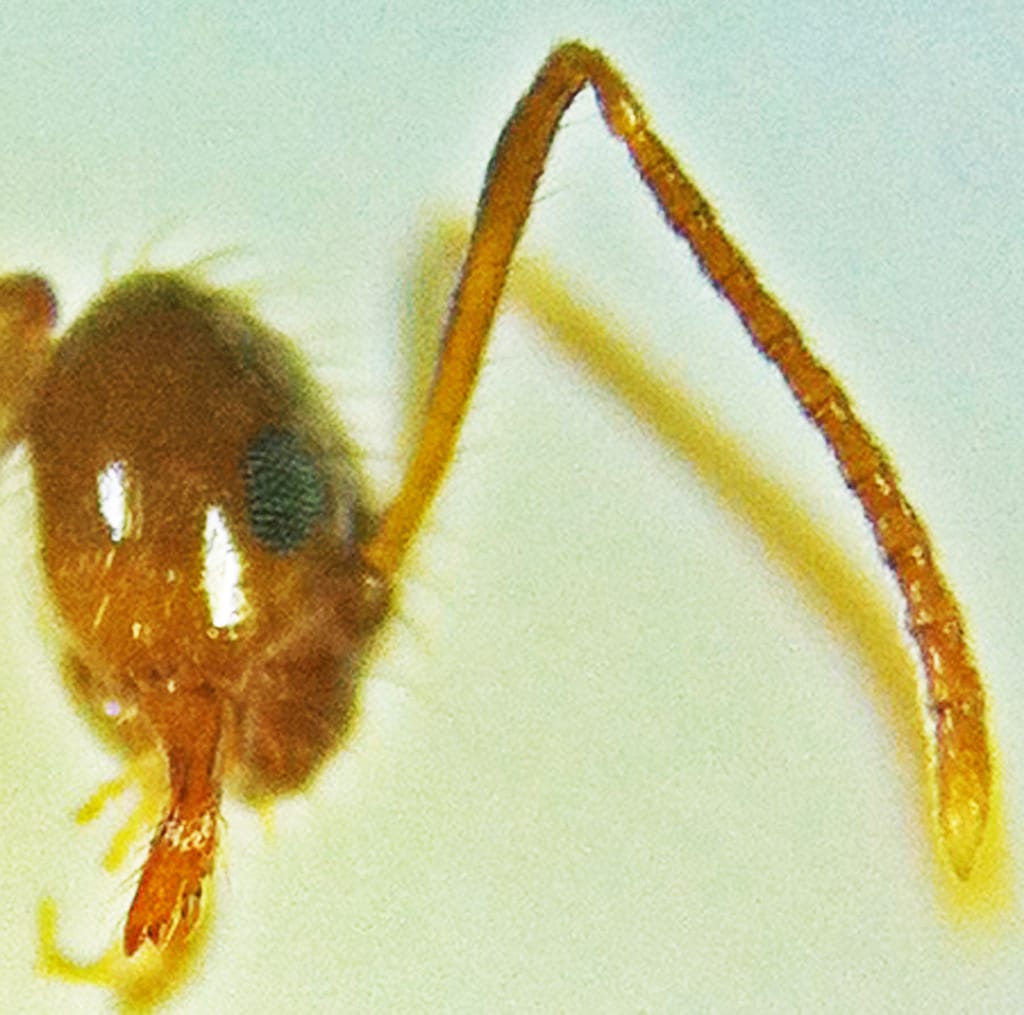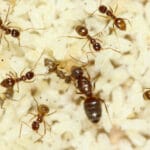A Small Ant with a Big Impact
The Rasberry crazy ant (Nylanderia fulva) might sound like a harmless, even whimsical creature, but this invasive species is anything but. Originating from South America, this tiny ant, measuring a mere 1/8 of an inch, has been making quite a name for itself in the Southern United States, particularly in Texas, since its arrival in 1938. What makes these ants unique, beyond their reddish-brown hue, is their frenetic energy and unusual behavior, leading to the moniker “crazy ant.” Unlike their more predictable counterparts, Rasberry crazy ants move erratically, making them fascinating to observe but incredibly difficult to control.
Why Are Rasberry Crazy Ants Such a Problem?
These ants aren’t simply a nuisance; they pose a significant threat to both the environment and human infrastructure. Their impact can be felt in various ways:
- Ecological Disruption: Rasberry crazy ants are highly competitive and readily displace native ant species, disrupting the natural balance of ecosystems. This displacement can have cascading effects on other organisms that rely on those native ant populations.
- Electrical Damage: These ants have an unusual affinity for electrical currents and are known to infest electrical equipment. Their presence can lead to short circuits, malfunctions, and even costly damage to appliances and electronics.
- Household Infestations: Their small size allows them to enter homes and buildings through the tiniest cracks and crevices. Once inside, they can quickly establish massive colonies, becoming a persistent and frustrating pest for homeowners.
Understanding the Enemy: Biology and Behavior
To effectively combat these tiny invaders, it’s essential to understand what makes them tick.
- Erratic Movement: Their “crazy” movements aren’t just a quirk; they are thought to be a foraging strategy, allowing them to cover more ground and locate resources more efficiently.
- Massive Colonies: Unlike many ant species that have a single queen, Rasberry crazy ants form super-colonies with multiple queens. This characteristic allows for explosive population growth and makes eradication extremely difficult.
- Unique Defense Mechanism: In a fascinating evolutionary twist, Rasberry crazy ants have developed a peculiar defense against one of their main competitors, fire ants. They can coat themselves in formic acid, neutralizing the venomous sting of fire ants and giving them an edge in territorial battles.
Control Strategies: A Multifaceted Challenge
Controlling Rasberry crazy ants presents a unique challenge due to their unusual biology and behavior. Traditional ant control methods, such as baits that target a single queen, often prove ineffective against these resilient invaders.
Current Control Methods:
- Habitat Modification: Eliminating potential nesting sites and food sources around the home is crucial. This includes keeping yards clean, trimming vegetation, and sealing any cracks or openings in foundations and walls.
- Chemical Control: Contact insecticides can provide temporary relief by killing ants on contact. However, these methods don’t address the entire colony and require repeat applications. Bait stations with insect growth regulators (IGRs) offer a more targeted approach. IGRs disrupt the ant’s life cycle, preventing reproduction and slowly reducing the colony size.
- Professional Pest Control: For severe infestations, professional pest control services are often necessary. Experienced professionals have access to a wider range of tools and techniques, including the ability to identify nesting sites and apply treatments strategically.
The Future of Rasberry Crazy Ant Control: Ongoing Research
Scientists are actively researching ways to manage and mitigate the impact of these invasive ants.
- Texas A&M University, at the forefront of this research, is studying the ant’s biology, behavior, and potential control methods. Their research focuses on understanding the ant’s rate of spread, its interactions with native species, and the development of more effective, targeted control strategies.
- Citizen Science Initiatives: Public awareness and participation are crucial in the fight against invasive species. Citizen science programs, such as those tracking the spread of Rasberry crazy ants, are providing valuable data to researchers and helping to monitor the ant’s movement and impact.
What You Can Do: Early Detection and Prevention
While completely eradicating Rasberry crazy ants from an area can be challenging, early detection and proactive measures can significantly minimize their impact.
- Be Vigilant: Regularly inspect your property, both inside and out, for signs of ant activity. Pay close attention to areas where ants are likely to enter, such as around doors, windows, and utility lines.
- Report Sightings: If you suspect you have Rasberry crazy ants, contact your local extension office or pest control professional for assistance with identification and control.
- Practice Prevention: Implement preventive measures like sealing cracks, keeping a clean yard, and storing food properly to make your property less inviting to these unwelcome guests.
The Rasberry crazy ant serves as a potent reminder of the interconnectedness of ecosystems and the potential havoc that invasive species can wreak. While we may not have all the answers yet, ongoing research, coupled with public awareness and proactive management strategies, will be essential in mitigating the impact of these tiny but formidable creatures.
If you’re curious to learn more about other fascinating creatures, check out our articles on the rat snake vs copperhead and the shoebill stork. You might be amazed by what you discover!
- Senior at What Age: Benefits & Eligibility Guide - March 29, 2025
- Unlocking Senior Benefits: How Old is a Senior? Your Complete Guide - March 29, 2025
- Master Russian Politeness:A Guide to Saying Please - March 29, 2025
















